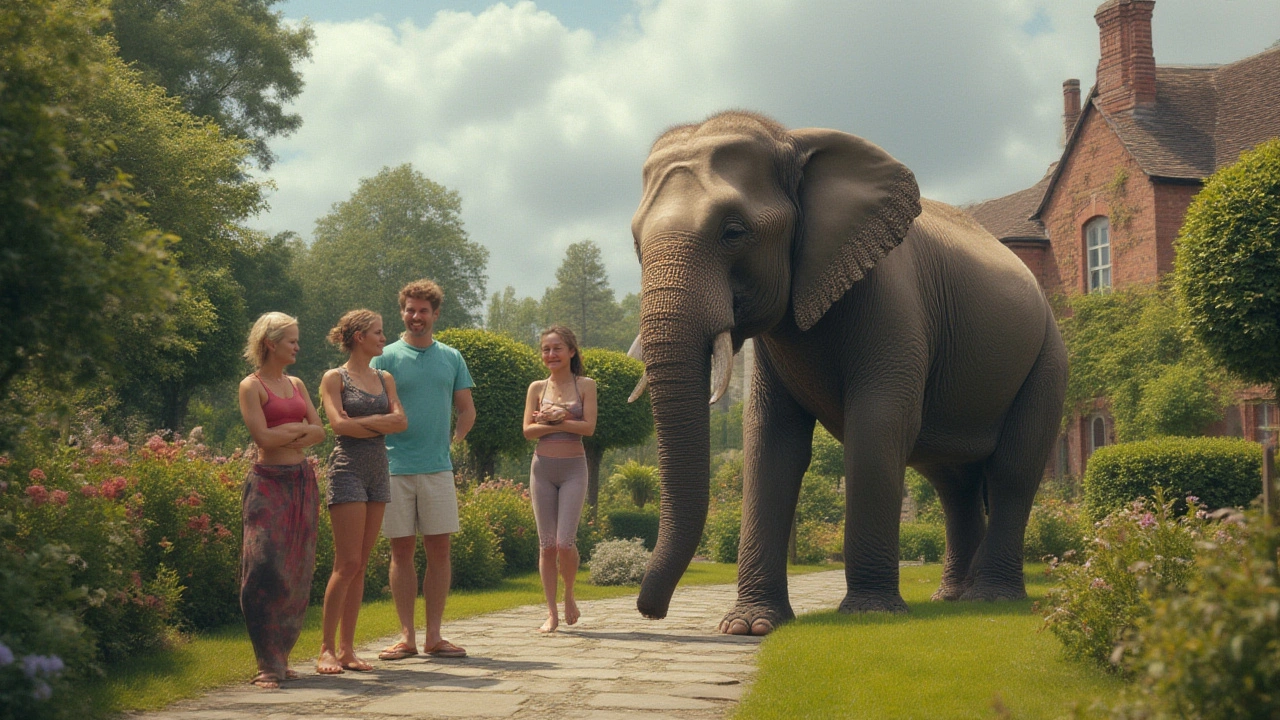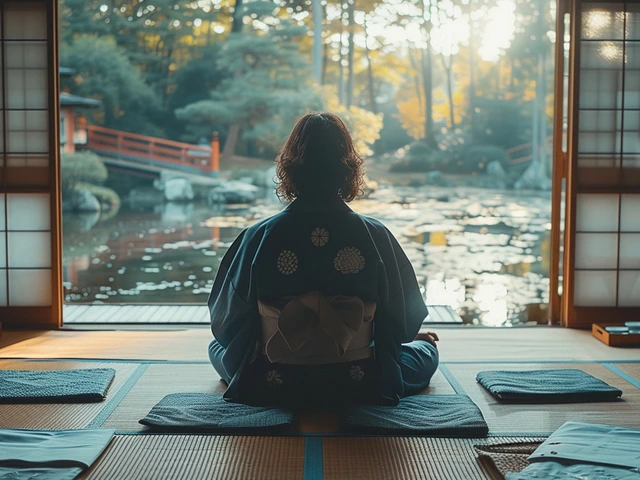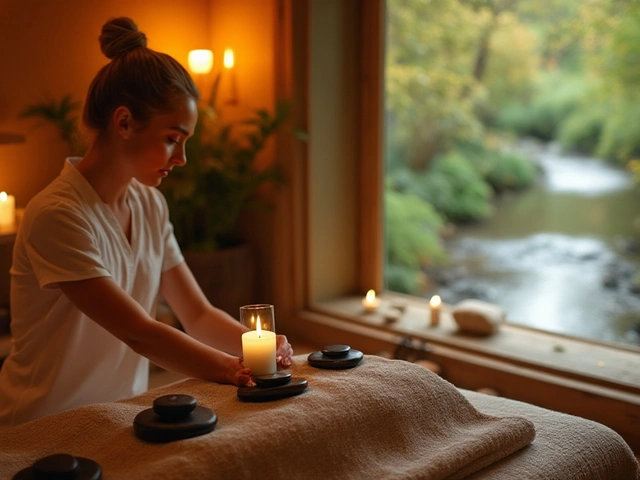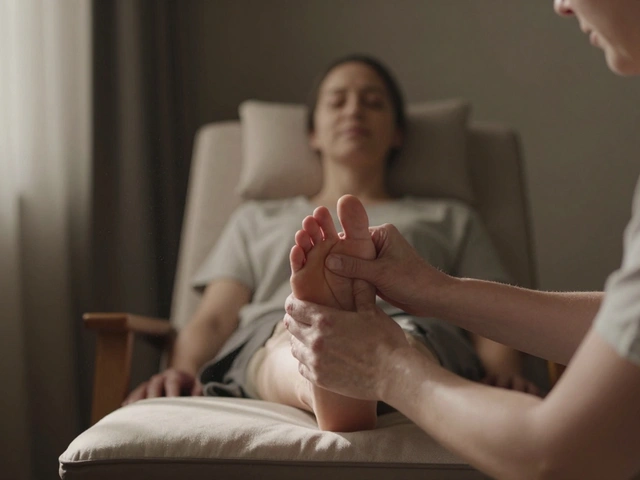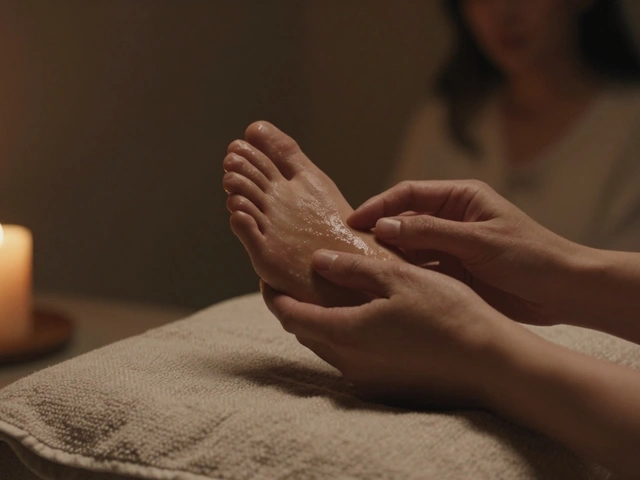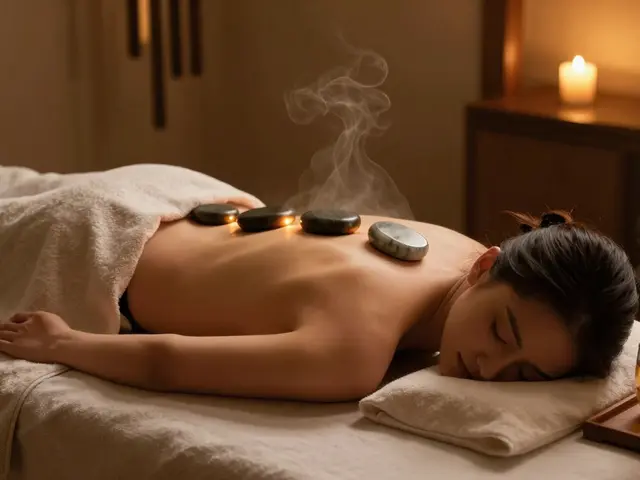If someone told you that a pachyderm could knead your back, most people would laugh it off or think it was clickbait. Not in Thailand. There, a massive trunk (sometimes a surprisingly light foot) could be working wonders on your stressed muscles—if you’re brave enough to try an elephant massage. This offbeat wellness treatment started out as a quirky tourist stunt, but in the last decade it’s pulled in travelers hunting for the next crazy thing to brag about. Cue the Instagram reels and nervous laughter—this trend sits at the crossroads of adrenaline, tradition, and wellness. What’s it like to lie down and trust your body to a creature that weighs as much as a pickup truck? Plenty of people are lining up to find out, often leaving with a story that trumps any spa tale back home.
How Elephant Massage Became a Real Thing
Let’s back up. Where did this idea even come from? Animal-assisted therapy isn’t new—dogs, horses, even dolphins have been invited into our worlds to help rub out trauma, anxiety, or just lonely vibes. But elephants, with their cultural weight in Southeast Asia, take it to a different level. In Thailand especially, elephants have held a deep place in folklore and history for centuries. They’re symbols of power, luck, and wisdom. For hundreds of years, they’ve shared space with humans: hauling timber, parading in royal processions, and, yes, entertaining tourists.
But massage? That neat twist likely started as a show—mahouts (elephant handlers) trained their animals to mimic massage moves, drawing oohs and aahs from soft-spoken visitors. Soon, the playful act grew into something real. By the 1990s, select parks and camps near Chiang Mai and Phuket were offering gentle full-body massages. What set them apart was the clear choreography: the elephant uses just its trunk or the soft underside of a foot, under its trainer’s constant supervision, to apply pressure—never enough to hurt, but just enough to impress. This evolved into sessions for those who wanted to spice up their holiday, and word quickly spread.
Now, you’ll find elephant massage in a handful of sanctuaries. Some argue it brings attention to captive elephants’ plight; others swear it’s the best wild story they ever collected. Either way, this isn’t some ancient secret handed down the decades. It’s a modern mash-up of local genius and global appetite for the unusual.
What Actually Happens During an Elephant Massage?
Imagine the nerves before your first rollercoaster ride—and mix it with a spa appointment. That’s elephant massage in a nutshell. When you show up, there’s usually a lively atmosphere, a blend of scepticism and excited chatter as nervous first-timers watch the elephants parade to the massage mat. Trainers explain the safety protocol: never move without instruction, let the elephant’s trainer guide all contact, and speak up if you feel uncomfortable—communication is everything here.
The process starts simple. You’ll lie down, sometimes on a bamboo mat, sometimes on a padded cushion, with trainers always close by. The elephant, surprisingly gentle for its size, is signaled to ‘massage’—using only its trunk, which can weigh up to 150 pounds but moves with delicate accuracy. The trunk is the star here, rolling or gently tapping your back, arms, or legs in a rhythmic sequence. Some routines involve the soft foot pad lowering onto your back, never with full weight, and always monitored.
Nerves tend to melt into nervous laughter as the reality sinks in—the pressure is real, the animal completely in control. Most report the touch feels something like a firm, rolling shiatsu move—strong yet measured, heavier than any human could deliver, but still far from bone-crushing. The elephant’s touch is surprisingly intuitive, pausing or shifting if trainers spot any discomfort. The whole show might last 10–15 minutes, a sweet spot—enough for the novelty and gentle relaxation, not quite enough to fall asleep. It’s definitely made for bragging rights, as well as, for some, a unique sense of calm that’s strangely grounding—something about trusting a giant must wire the nervous system differently. That said, the safety factor is constantly at play; if you tense up or move unexpectedly, trainers call it off. These are still wild animals, even if highly trained, and their power is impossible to forget.
- Trunk taps: The trunk’s grip pressure can be controlled, switching from almost ticklish to a deep, rolling push.
- Foot press: This is rarer and only done by especially well-trained animals—never both feet, and never with full weight.
- Session time: Most last under 20 minutes for safety and animal comfort.
Not every massage is the same—trainers might tailor it to your comfort or opt for just the trunk. You’ll feel the elephant’s skin, course and wrinkled, the warm breath, maybe the earthy scent lingering after. It definitely wakes up every sense in your body, not just your aching muscles.
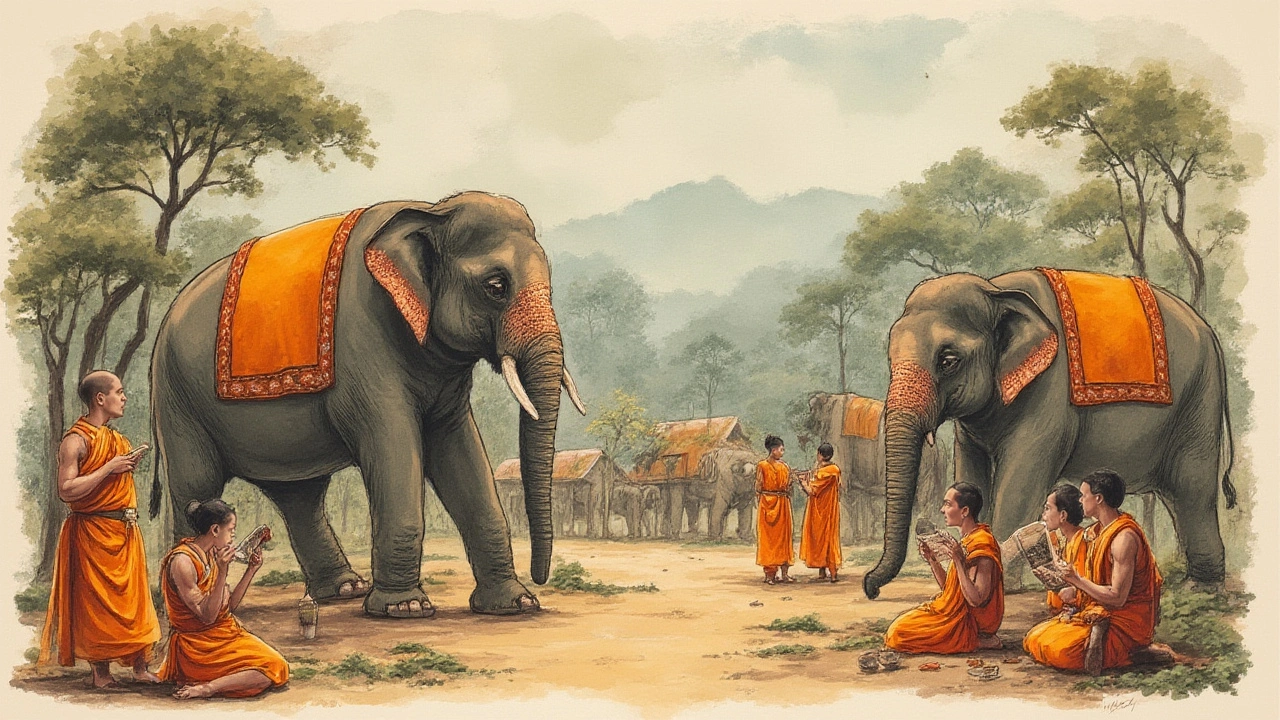
Are There Real Health Benefits?
Time for the million-baht question: Is there more to elephant massage than a great vacation story? Most doctors will raise an eyebrow—and rightly so. There’s no published clinical research singing the praises of a trunk massage on stress hormones or muscle tension. But, here’s what’s grounded in reality. Elephant massage scores big on the unique thrill factor, giving people a fresh kind of adrenaline rush mixed with trust-based relaxation. That combo sometimes works wonders against everyday stress, much like plunging into cold water or skydiving (albeit with a less dramatic risk).
Some wellness specialists point to the novelty effect. When the experience is so far outside your daily routine, your brain’s chemicals spike—think dopamine, endorphins. Even if there’s no magic happening at the muscle level, that rush can break up monotony, lessen stress, and, honestly, make people feel alive. Visitors often say they walk away simultaneously relaxed and energized. And here’s a wild fact: elephant trunks are loaded with nerve endings—over 40,000. So when an elephant uses its trunk to probe, poke, or roll, there’s an advanced level of feedback. The animal is surprisingly sensitive to resistance, often adjusting pressure without any command from humans. That makes it a species-specific skill set—no machine can copy the touch of a two-ton animal reading you with its face.
Still, don’t switch out your regular massage therapist just yet. Human hands have intuition too—and decades of science backing them up. If you’re dealing with chronic pain, sensitive joints, or healing injuries, elephant massage is more adventure than legitimate therapy. Pregnant guests, kids, or anyone with mobility problems should skip it. But if your muscles can handle a brisk, unconventional session and you relish a good story, you’re in the target audience.
Here’s a look at some wellness claims and risks you might hear about in elephant massage (based on informal user reports):
| Perceived Benefit or Risk | Details/Comments |
|---|---|
| Stress Relief | High novelty and adrenaline levels temporarily reduce stress in many guests. |
| Muscle Relaxation | Firm, rhythmic pressure may ease tension like a deep-tissue massage (anecdotal). |
| Social Bonding | Often done in groups, so you get shared memories and plenty of laughs. |
| Risk: Injury | Accidents are rare but possible if animal or human startles; always supervised. |
| Risk: Ethics | Concerns about animal welfare; best to choose certified, transparent sanctuaries. |
The real value? Elephant massage jumpstarts your body’s ‘wake-up’ hormones and shatters routine. It’s a circuit breaker for the mind, a unique moment to remember. The afterglow for most isn’t muscular—it’s mental.
Safety, Ethics, and What To Watch Out For
Don’t get swept up in the fun without checking the fine print. Human safety and animal ethics walk a tightrope with these sessions. Wherever there’s demand, there’s also risk—both for you and for elephants that may not have signed up for a life of performance. If you’re thinking about booking this wild thrill, this section is your survival kit.
Start by googling the venue’s reviews—not just the star rating, but detailed comments about how animals are kept and trained. Are elephants allowed enough privacy and downtime? Is their food and medical care obvious? Do trainers seem knowledgeable and genuinely bonded with their herd, or is all the energy about squeezing quick cash from tourists? The best places post details, not just pretty pictures—ask for proof if you’re not sure. Reputable sanctuaries partner with conservation groups or have a clear animal rescue backstory, rather than buying elephants for entertainment.
- Hidden chains and bullhooks? Major red flags—real sanctuaries don’t use force or pain to control animals.
- Short, gentle sessions only—a tired elephant is likelier to act unpredictably or get hurt.
- Full transparency—good venues answer questions about safety, care, and how long animals work each day.
- Medical staff on hand—look for parks with on-site vets and backup plans if an animal or guest gets spooked.
Your own safety comes next. Trainers should walk you through the entire routine before you hit the mat. Stay ultra-still during the massage—it’s not the moment for a sudden stretch or a surprise selfie. Wear comfy clothes (think gym gear, no jewelry), and never approach an elephant unsupervised. If you’re injured, pregnant, or just nervous, skip the experience. This isn’t a regular back rub—you’re trusting most of your wellbeing to an unpredictable animal, however sweet the handlers seem.
Last but not least, everywhere you visit, you’re voting with your wallet. Ethical venues use a cut of profits for rescue work or habitat support. Question the marketing. If the animal looks bored, stressed, or chained up, you’re probably on the wrong side of the wellness equation. In Thailand, certified parks and government-backed sanctuaries are a safer bet—but always do your research before booking.

Tips, Trivia, and Real Stories From the Mat
Ready to book your spot on the elephant mat? Hold up. Here are some pro tips, unseen facts, and wild anecdotes that might swing your decision—or at least prep you for what real-life animal massage feels like.
First, if you’re a heavy sleeper or prone to muscle tension, you might be surprised that the trunk’s rolling pressure can work out knots that human hands can’t reach. A 2022 travel survey found elephant massage ranked third in unique wellness experiences among Southeast Asia tourists—beating out fish pedicures but trailing behind jungle yoga retreats. And many who sign up are repeat thrill-seekers, not just first-timers ticking a box. Interestingly, a small group of returnees claimed the experience helped reduce their sense of anxiety in new situations—possibly tied to the trust leap of letting a giant animal take charge, but again, this isn’t scientific gospel.
If you decide to go for it, book in advance—peak season (November-February in Thailand) fills up fast, and the best sanctuaries limit the number of massages per day. Most venues suggest not eating a heavy meal beforehand. It helps to do a quick stretch or yoga warm-up before your turn, too, loosening tense muscles and clearing your head.
- Bring a spare shirt: trunk slobber is part of the package
- Shoes off, spirit on—relax and keep a sense of humor. It’s more memorable if you lean into the weirdness
- Check insurance: most parks cover minor scrapes, but invasive injuries are rare
- Silence your phone—trainers won’t allow photos during your session, but someone can snap you from the sidelines
Now, for a fun story: in 2019, a travel vlogger named Paula H. went viral when the elephant gave her a scalp massage with its trunk, which ended with her hair styled in a spiky mohawk and her laughing so hard she could barely stand. Paula said it was "both terrifying and hilarious—it felt as if 20 hands were massaging me, but each was made of rubber and sausage." It’s the kind of story only an elephant massage can produce.
Don’t forget, the big memory always outlives the slight muscle ache or the nervous anticipation. If you want an experience to talk about for years, with a wellness twist and a dash of animal magic, this is it. Just do your research, keep your wits, and maybe bring along a friend—if only to share the wildest post-massage laughter you’ve ever had.

